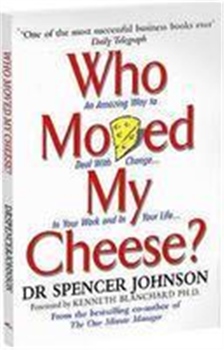Description
The Art of the Startis the classic bestselling guide to launching and making your new product, service or idea a success. Fully revised and expanded for the first time in a decade, The Art of the Start2.0 now features Guy Kawasaki's advice on the tools which make it easier than ever to get established - including social media, crowdfunding and cloud computing. Whether you're an aspiring entrepreneur, own a business, or want to get more entrepreneurial within any organization, this book will help you make your crazy ideas stick. It's an adventure that's more art than science - the art of the start. 'The Art of the Start 2.0is the ultimate entrepreneurship handbook. Kawasaki's generous wisdom, tips, and humour reflect his successes and failures. We can all benefit from his insights.' Arianna Huffington, President and Editor-in-Chief, Huffington Post'A successful entrepreneur requires three things- a garage, an idea, and this book - Guy's irrepressible guide to the raw essentials of life in a young company.' Michael Moritz, Sequoia Capital
About the Author
I was born in Honolulu, Hawaii in 1954. My family lived in a tough part of Honolulu called Kalihi Valley. We weren’t rich, but I never felt poor-because my mother and father made many sacrifices for my sister and me. My mother was a housewife, and my father was a fireman, real estate broker, state senator, and government official during his long, distinguished career.I attended Iolani School where I graduated in 1972. Iolani is not as well known as its rival, Punahou because no presidents of the U. S. went there, but I got a fantastic and formative education there. (Punahou is “USC,” and Iolani is “Stanford”—but I digress.) I pay special tribute to Harold Keables, my AP English teacher.He taught me that the key to writing is editing. No one in the universe would be more shocked that I have written ten books (or one book ten times) than Harold Keables.After Iolani, I matriculated to Stanford; I graduated in 1976 with a major in psychology—which was the easiest major I could find. I loved Stanford. I sometimes wish I could go back in time to my undergraduate days “on the farm.”After Stanford, I attended the law school at U.C. Davis because, like all Asian-American parents, my folks wanted me to be a “doctor, lawyer, or dentist.” I only lasted one week because I couldn’t deal with the law school teachers telling me that I was crap and that they were going to remake me.The following year I entered the MBA program at UCLA. I liked this curriculum much better. While there, I worked for a fine-jewelry manufacturer called Nova Stylings; hence, my first real job was literally counting diamonds. From Nova, its CEO Marty Gruber, and my Jewish colleagues in the jewelry business, I learned how to sell, and this skill was vital to my entire career.I remained at Nova for a few years until the the Apple II removed the scales from my eyes. Then I went to work for an educational software company called EduWare Services. However, Peachtree Software acquired the company and wanted me to move to Atlanta. “I don’t think so.” I can’t live in a city where people call sushi “bait.”Luckily, my Stanford roommate, Mike Boich, got me a job at Apple; for giving me my chance at Apple, I owe Mike a great debt. When I saw what a Macintosh could do, the clouds parted and the angels started singing. For four years I evangelized Macintosh to software and hardware developers and led the charge against world-wide domination by IBM. I also met my wife Beth at Apple during this timeframe—Apple has been very good to me.Around 1987, my job at Apple was done. Macintosh had plenty of software by then, so I left to start a Macintosh database company called ACIUS. It published a product called 4th Dimension. To this day, 4th Dimension remains a great database.I ran ACIUS for two years and then left to pursue my bliss of writing, speaking, and consulting. I’ve written for Macuser, Macworld, and Forbes. I call these the “Wonder Years” as in “I wonder how I came to deserve such a good life.”In 1989, I started another software company called Fog City Software with three of the best co-founders in the world: Will Mayall, Kathryn Henkens, and Jud Spencer. We created an email product called Emailer which we sold to Claris and then a list server product called LetterRip.In 1995 I returned to Apple as an Apple fellow. At the time, according to the pundits, Apple was supposed to die. (Apple should have died about ten times in the past twenty years according to the pundits.) My job on this tour of duty was to maintain and rejuvenate the Macintosh cult.A couple years later, I left Apple to start an angel investor matchmaking service called Garage.com with Craig Johnson of Venture Law Group and Rich Karlgaard of Forbes. Version 2.0 of Garage.com was an investment bank for helping entrepreneurs raise money from venture capitalists. Today, version 3.0 of Garage.com is called Garage Technology Ven

















